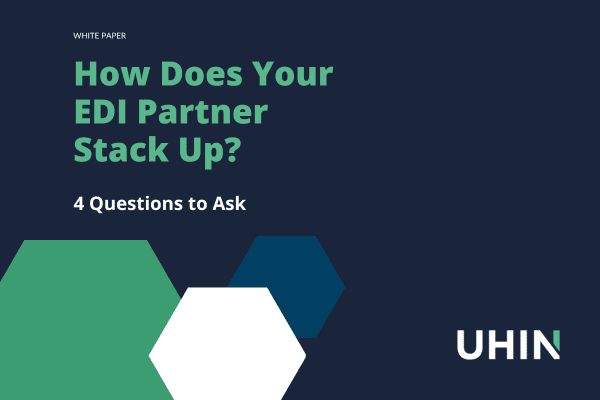
4 Questions to Ask
Question 4: How Does Your EDI Partner Reduce the Burden of Claims Submission for Providers?
Plan members want access to a range of high- quality providers. Without a robust provider network, health plans are challenged to grow membership and differentiate themselves from competitors.
The Council for Affordable Quality Healthcare (CAQH) 2022 Index reported that providers spend ten minutes submitting a single electronic claim on average. For paper, it’s 22 minutes. A large part of this is repetitive data entry. These time blocks add up to significant resource drains in a typical day. Alleviating stressors will reduce payer-provider friction and promote cooperation in your common goal to improve health outcomes for members.
With the right EDI partner, you can streamline operations, reduce administrative burden, and improve your organization’s bottom line. Embracing new technologies and cooperative partnerships can help you gain a competitive advantage and, ultimately, provide better care to members.
Our fourth and final question leads you to ask yourself: “Is my EDI partner providing holistic support to my partner’s and my own organization’s operations?”

Ready to jump to all four questions? Want to see how your EDI partner stacks up? Download our white paper here.
How Does Your EDI Partner Reduce the Burden of Claims Submission for Providers?
Plan members want access to a range of high- quality providers. Without a robust provider network, health plans are challenged to grow membership and differentiate themselves from competitors.
The healthcare industry is becoming more consumer-driven and labor shortages continue to mount. Health plans need to be mindful of provider relationships and the administrative burdens your claims processing may be placing on them.
The Council for Affordable Quality Healthcare (CAQH) 2022 Index reported that providers spend ten minutes submitting a single electronic claim on average. For paper, it’s 22 minutes. A large part of this is repetitive data entry. These time blocks add up to significant resource drains in a typical day. Alleviating stressors will reduce payer-provider friction and promote cooperation in your common goal to improve health outcomes for members.
Your healthcare EDI partner should help you to help providers with an affordable billing tool. Our solution, MYUHIN, reduces repetitive data-entry, and solidifies coding and submissions data to satisfy your processing requirements. Providers can use MYUHIN to submit claims, check patient eligibility, and search, view, and download payment information from any computer, any where.



